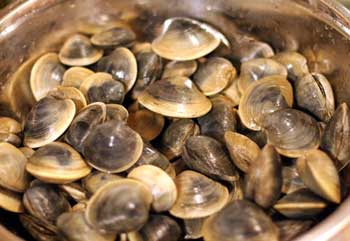 What a perfect time to declare it to be New England clam chowder week because the temperature here in Maine has been zero degrees at night and the wind has been a howling! Recipes for chowder are pretty personal around here. Some old salts would never use rendered bacon fat to sauté their onions in, they'd stop listening to you, roll their eyes and turn up their noses. Salt pork is how the old timers started chowder, period. Quahogs, not likely, either.
What a perfect time to declare it to be New England clam chowder week because the temperature here in Maine has been zero degrees at night and the wind has been a howling! Recipes for chowder are pretty personal around here. Some old salts would never use rendered bacon fat to sauté their onions in, they'd stop listening to you, roll their eyes and turn up their noses. Salt pork is how the old timers started chowder, period. Quahogs, not likely, either.
I'm telling you from experience you can't please too many people here in Maine with chowder because it's never like their mother's. Perhaps they will taste it, but if you leave the room they all will be chatting about "where did she learn to make chowder, Howard Johnson's"? But, I'll take a shot at MY way of making it and hope that I don't take too much heat for it.
First off, you need 2 1/2 to 3 pounds of steamer clams, yup, steamers. What's a steamer clam, you ask? It's a soft shell clam that lives in sandy or muddy Atlantic shoreline. If you're lucky enough to have a choice, pick the mud clams. Nothing complicated, the mud washes away after several soakings, but God couldn't get all the grit and sand out even with an army to help. There's alway some crunchy grit left, period! Clean the fresh steamers well and go directly from the sink to a waiting large 6 quart heavy bottomed pot, turn the heat on medium and cover. You caught me, no water! Be brave...

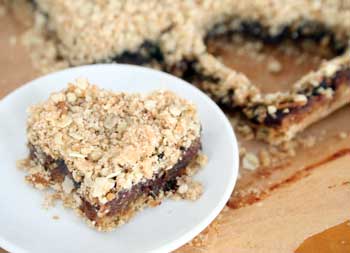 When was the last time you ate a date bar? I haven’t had one in years. In fact, I can’t remember the last time I’ve even given thought to that deliciously sweet, rich layered dessert.
When was the last time you ate a date bar? I haven’t had one in years. In fact, I can’t remember the last time I’ve even given thought to that deliciously sweet, rich layered dessert.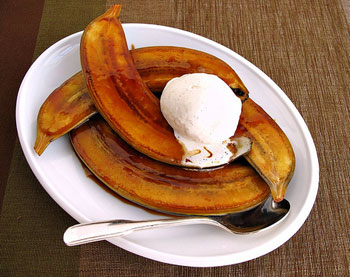 I've always had a love and hate relationship with bananas. They were forced upon by my parents when I was a kid to make sure I was getting my potassium. I wish they knew then that oranges and even greens have more potassium—I would have rather eaten spinach. As an adult I eat bananas only occasionally, because I don't care for the texture or waxiness. That was until recently. I've almost become a banana addict, eating them every chance I get.
I've always had a love and hate relationship with bananas. They were forced upon by my parents when I was a kid to make sure I was getting my potassium. I wish they knew then that oranges and even greens have more potassium—I would have rather eaten spinach. As an adult I eat bananas only occasionally, because I don't care for the texture or waxiness. That was until recently. I've almost become a banana addict, eating them every chance I get.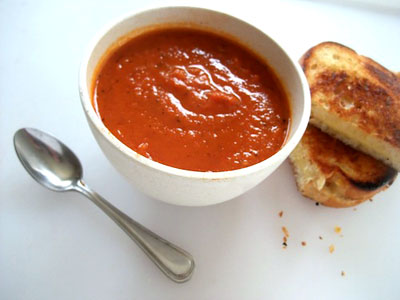 It's easy to get so caught up in the idea of eating seasonally that we forget that there are certain things that aren't necessarily seasonal, for example vegetables grown in hothouses or greenhouses like Belgian endive, cucumbers and mushrooms, also preserved produce--jams, pickles, chutney, frozen and canned foods. Which brings me to canned tomatoes, which are a great choice for recipes since fresh tomatoes are in season for a fairly short period of time.
It's easy to get so caught up in the idea of eating seasonally that we forget that there are certain things that aren't necessarily seasonal, for example vegetables grown in hothouses or greenhouses like Belgian endive, cucumbers and mushrooms, also preserved produce--jams, pickles, chutney, frozen and canned foods. Which brings me to canned tomatoes, which are a great choice for recipes since fresh tomatoes are in season for a fairly short period of time.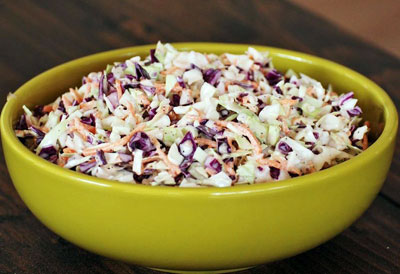 It’s hard to believe that we’re already approaching Labor Day weekend – the summer just flew by. According to the Hearth, Patio & Barbecue Association (HPBA), Labor Day is one of the most popular holidays for barbecuing - after 4th of July and Memorial Day.
It’s hard to believe that we’re already approaching Labor Day weekend – the summer just flew by. According to the Hearth, Patio & Barbecue Association (HPBA), Labor Day is one of the most popular holidays for barbecuing - after 4th of July and Memorial Day.
